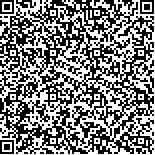下载中心
优秀审稿专家
优秀论文
相关链接
摘要

地形校正是准确获取地形复杂区遥感反射率的重要步骤,对提高山区地表遥感参数定量化反演精度,扩大遥感产品应用广度具有重要意义。从20世纪80年代开始,国内外学者开始对准确获取山区地表遥感反射率进行研究,建立了多种地形校正模型来减少或消除遥感图像中地形效应影响,减少同种地表类型的反射率差异,并将地形校正模型分为经验模型和物理模型。根据构建物理模型时是否考虑地表非朗伯体特性,将物理模型分为朗伯体假设模型和非朗伯体假设模型,本文分别从朗伯体假设模型和非朗伯体假设校正模型展开叙述。从两类模型构建的理论基础,模型特点,局限性等几方面进行分析和讨论,描述了两类模型的发展历程,系统阐述了朗伯体假设模型和非朗伯体假设模型的适用性和不足,剖析了目前地形校正模型存在的问题与挑战。同时,本文也比较了应用于地形校正的效果评价方法,并展望了地形校正方法和地形校正评价方法的未来主要发展方向。
Steep terrain produces serious topographic effects on remote sensing satellite imageries. Serious topographic effects cause difficulty in classifying vegetation species and retrieving key essential climate variables (such as albedo, Leaf Area Index, and fraction of absorbed photo synthetically active radiation). These effects also bring complexity in distinguishing the unhealthy change in land covers over rugged terrains. Topographic correction is necessary for remote sensing applications over mountainous areas. Researchers have attempted to remove or at least reduce topographic effects in remote sensing imageries by using various standard methodological algorithms. The background and the topographic correction model have been reviewed in former studies. However, several effective topographic correction models, which have high quality and have been newly developed during these years, have not been mentioned and recommended comprehensively. Therefore, topographic correction models and evaluation methods for optical remote sensing imageries from the presented research chain were reviewed comprehensively in this paper. The aim was to determine the potential effective solutions for topographic effect correction over rugged terrains. This study is important for quantitative remote sensing applications in mountainous areas.Topographic correction models have been explored for more than 30 years (Fig. 1). These models can be divided into three categories, namely, the regression model, the Lambertian-based model, and the non-Lambertian-based model. The regression model generally has obvious advantages of simplified formulation and easy operation. However, this model has the shortage of lack of physical meaning for empirical parameters. The Lambertian-based model has rigorous mathematical formulas, which have clear physical meaning for parameters and are easy to operate for reducing complex topographic effects. Meanwhile, the Lambertian models are built on the basis of several assumptions and have the obvious shortage of ignoring the non-Lambertian surface reflectance. This negligence may result in overcorrection, especially over shady surfaces. The non-Lambertian model can improve the performance of the Lambertian-based model, especially over heterogeneous land surfaces.On the basis of this study, we summarized the problems in existing topographic correction model and provided several possible suggestions for the development of a topographic correction model in optical remote sensing. These suggestions can provide important guidance to the research on topographic correction and its practical application.

